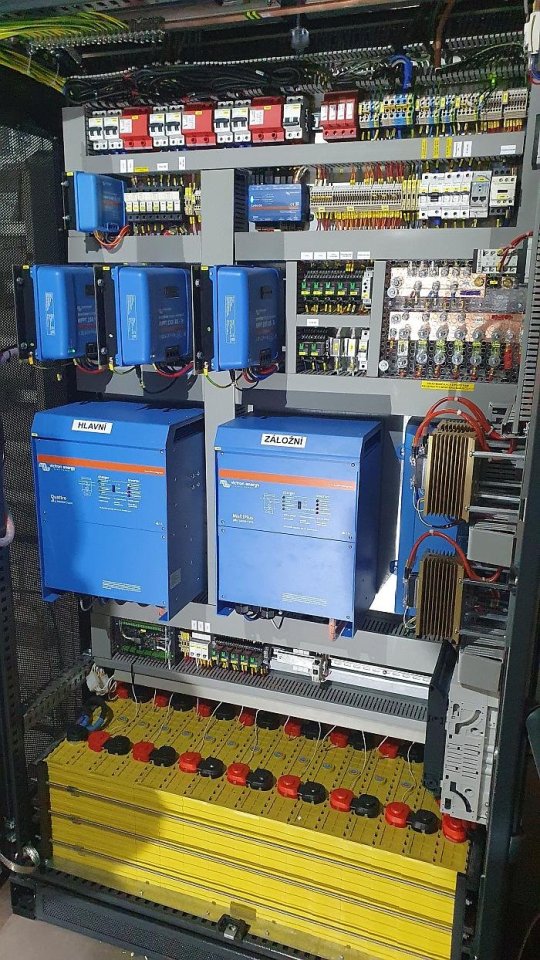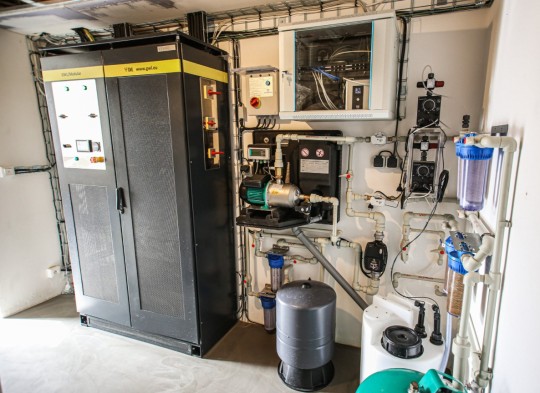#GWL/Modular
Explore tagged Tumblr posts
Photo



Inside “The Beast”
The photo of the inside of the GWL/Modular Complete Energy Center for the Czech Sustainable Houses project.
The two photos bellow show the moment of the first installation and the place of the installation after the other technology components (water, purification, heating, etc) were installed.
Related links:
The GWL/Modular Solution - Wiring Diagram https://gwl-power.tumblr.com/post/660797081020203008/ The GWL/Modular Solution in Action https://gwl-power.tumblr.com/post/639642003572998144/ She is the “Beast” or the “Bestie” https://gwl-power.tumblr.com/post/632974240289865728/
1 note
·
View note
Photo



GWL/Modular - moving ahead
The GWL/Team is slowly and gradually moving ahead with the installation for the The Community Garden Project – Pastvina. In this installation, GWL has deployed the solution based on the GWL/Modular concept.
This installation will be available as a reference project for the customers to understand how the open-source installation based on GWL/Modular can be designed and assembled in any part of the world.
Stay in touch for more details to come!
3 notes
·
View notes
Photo

GWL/Modular Flexi Pack in an animated action
This animated GIF shows how GWL/Modular Flexi pack can be assembled by any “regional electrician” at any place of the world.
Modularity: The battery pack consists of large capacity cells that have robust and reliable design. VERSUS: The other solutions use hundreds of small round cells fixed together by spot or laser welding. There is no modularity in such type of solution.
Easy assembly and disassembly: the pack can be assembled at any location of the world. It can also be easily disassembled and serviced. VERSUS: the black box solutions for other vendors are locked against any servicing by local users, the pack cannot be maintained or repaired.
Complete life span: after many years (or even decades) of reliable service, the GWL/Modular pack can be disassembled and the cells can be removed to be used for some second-file battery project. VERSUS: with the laser-welded fixed battery packs, the whole thing will become a heap of non-functional electric waste. There is no way to dissemble it, reuse it or refurbish it. You will be only a waste product!
Say “No!” to battery black-boxes, make a decision to say “Yes!” to fully modular solutions.
1 note
·
View note
Photo

This is the GWL’s work
Creating a solution from a single cell to a complete system that can power the whole house independently. Not only creating the solution, but implementing the design in a way that is fully modular, and replicable in any part of the world
GWL is helping the world-wide community to reach at reliable and easy-to-build DC power solutions.
Stay in touch with GWL!
1 note
·
View note
Photo

GWL/Modular Schematics - open source projects
The significant part of the GWL/Modular concept is the support of the customer installations by means of all purpose schematics.
GWL will be releasing many of the installation schematics to provide additional support for customer and partner projects.
The goal is that any skilled local electrician can follow these guidelines and make a reliable solution for the community of the customers at surrounding area. This will help to reduce the installation and operation costs of the DC power based projects.
In other words, let us call it: DC energy solutions and storage open-source projects.
1 note
·
View note
Photo



GWL/Modular Flexi Pack
Here is one of the first prototypes of the GWL/Modular Flexi Pack.
With GWL/Modular everybody can assemble robust and reliable battery packs with out a need for special equipment. No need for welding, soldering or any other difficult hardware operations.
GWL/Modular Flexi Pack - You are ready to go.
1 note
·
View note
Photo

CPM1 - manual on the board
What is the voltage setting for minimal and maximal voltage of the LFP and LTO cells?
See the answer for yourself. You can see the answer printed on the circuit board of the CPM1. Easy to set, easy to go. What do you think about this idea?
1 note
·
View note
Video
youtube
GWL/Modular CPM - Expand the lifetime of your batteries
Make your Lithium battery last longer, simply, with fractional costs compared to similar solutions.
GWL/Modular CPM is an easy-to-use and effective three-level solution for the protection of the LiFePO4 and LTO batteries from excessive discharge or overcharge. The GWL CPM module helps your applications and makes the operation of LiFePO4/LTO battery packs easier, more reliable and safer.
- Compatible with 4-16 LiFePO4/LTO cells - Expands the lifetime of the battery pack - Cell voltage indication range 1.7 – 4.09V - Low operating consumption 0.65 W - Able to control three bi-stable relays for charger, load and emergency backup - Built-in battery emergency disconnection and shutdown - Minimum and maximum voltage outputs and much more...
Protect the battery pack and keep it running.
1 note
·
View note
Photo


The CPM improvements in progress
We are working on improvements for the GWL Cell Performance Monitor. The modifications of the firmware will allow improved settings and communication with the Cell Communication Module.
We have also made the RF (radio frequency) emissions tests to make sure the GWL Modular CPM board is withing the EMC requirements and limits.
Stay tuned for more news.
1 note
·
View note
Photo




BMS Easy Balancing Board
GWL Team is working on a design of the balancing board that will be used for 4 cells and will allow balancing up to 10 Amp.
Check the photos from the testing of the first prototype.
More details to follow, when the product will be verified and made available.
0 notes
Photo

BMS Easy – an easy way to monitor your cells
The BMS Easy is a single cell protection board for the low voltage and over voltage monitoring of the LFP cells.
It allows the serial connection of multiple cells to get a closed circuit with monitoring of larger packs.
It also provides the parallel connection signal that can be used to report (i.e. feedback) the status of the pack.
The BMS Easy allows for both manual and for remote resetting.
Check more details about the BMS-Easy and see how it may help you in your installations.
Go to the BMS Easy product range.
0 notes
Photo


GWL/Modular battery packs
The demonstration installation of the GWL/Modular packs. The goal of the GWL/Modular solution is to offer components and accessories that allow for simple and fully modular architecture. Simply said: the GWL/Modular project will make the life of the DC solution providers simpler and easier.
1 note
·
View note
Photo

BMS Basic integrated with Charger
Check the connection diagram for the integration of the BMS Basic and the DC Charger
More about BMS Basic (based on the CPM Board)
Check the quality AC/DC chargers from MEAN-WELL.
0 notes
Photo


It’s Easy! BMS Easy
Check some more initial connection diagrams for the BMS Easy.
BMS Easy is a simple and easy monitoring for individual cells and battery packs.
Stay in touch. More to follow.
In the mean time you can check the GWL/Modular products.
1 note
·
View note
Photo

Quick and Easy - The magnetic 5 pole connector
The magnetic 5 pole connector GWL/M-5P-MG is designed to be used a service connector for a 5-pin wiring. This means it can be used to transfer 4 signals and one common ground.
For DC application this service connector is purposed to be used for a quick connection to 12V battery banks or packs.
For example, the ELERIX LiFePO4 12V 100Ah - Front Terminal Battery uses this connector to allow the access to each of the cells in the battery.
Basic specifications:
Package: 1pc male + 1pc female connector
Pins: 5 pins --- 4x (plus) + 1x (typically for GND or minus)
Voltage rated: 12V
Current rated: 2A per pin
Check more details about the related GWL/Modular products.
0 notes
Photo

Connection of CPM with AMETEK Latching relay
This diagram shows the connection of the AMETEK Latching Relay with CPM Board.
The relay is controlled by the CPM Board contacts. However, because the AMETEK Latching relay needs a high current rated power supply for the coils, the latching relay itself needs to be connected by means of auxiliary relays.
The auxiliary relays are powered by 12V, the 12V voltage is taken from the 4th cell (12V DC) and must be separately protected by a DC breaker.
After the disconnection it is necessary to press the START button to resume the function. There is also the STOP button to make the manual disconnect.
Please note the fusing in this circuit: two main fuses on the DC power line, one circuit breaker on the DC 12V line for the latching relay.
Study more links:
Get details about the CPM board
Check the latching relay from AMETEK
Details about the 2A circuit breaker
Download the diagram (PDF)
0 notes